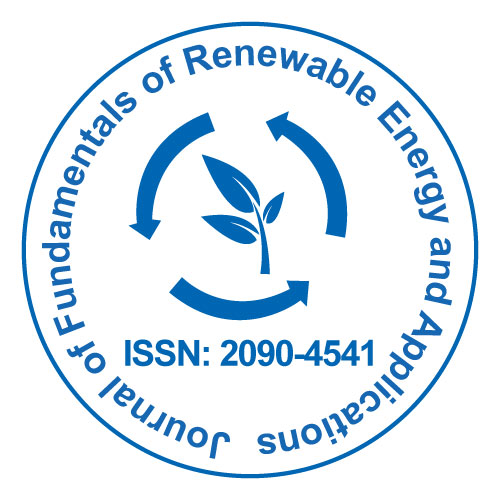
Journal of Fundamentals of Renewable Energy and Applications
Open Access
ISSN: 2090-4541

ISSN: 2090-4541
Eliane Lazzari, Enelise Scapin, Aline Nunes, Rosangela Jacques Assis and Elina Bastos Caramao
Universidade Federal do Rio Grande do Sul, Brazil
Instituto Nacional de Ci�ªncia e Tecnologia â�� Energia e Meio Ambiente, Brazil
Universidade Tiradentes, Aracaju, Brazil
Scientific Tracks Abstracts: J Fundam Renewable Energy App
One interesting and abundant source of biomass is the rice husk, mainly in Rio Grande do Sul state (south of Brazil), where approximately 12.6 million tons per year of rice husk is produced. The disposal of this waste is a serious environmental problem due to their properties, difficult to decompose, and its high phenolic content turnning highly toxic for rivers or lakes. An alternative to reduce the amount of rice husk is its conversion into bio-oil by pyrolysis process. Pyrolysis not only reduces its amout, but transforms it in a added value chemical (bio-oil) and an interesting solid residue (biochar) with potential use as adsorbent or for soil enrichment. For a convincing application of the bio-oil, it is needed to characterize it completely, defining what are the major compounds and what are their concentration levels. Only after this, it is possible to propose a recovery route of these compounds from the original biomass. In this study, a bio-oil from the fast pyrolisis (100 �ºC/min) rice husk was produced and details of its composition was studied by GCxGC/TOFMS (Time-of-flight mass spectrometry). Pyrolysis was conducted in a fixed bed reactor (lab-scale) using following parameters: 6.5 g of sample (0.5-1 mm), oven heating from 25�°C to 650�°C at the rate of 100�°C/min and nitrogen flow of 1 L/min. The yield of the rice husk bio-oil, with aqueous phase, obtained under these conditions was 36.5%. The GC��GC/TOFMS was allied to software tools and Retention Index was calculated for each compound according to Van den Dool & Kratzâ��s equation, were very important in the characterization of bio-oil compounds allowing the identification of 149 compounds. Our results showed that a composition of rice husk bio-oil was predominantly phenolic (32.6%) which is of intersest to replace fossil phenol for the production of chemicals. The major constituents in this oil were found to be 2-methoxy-phenol (5.09%) and 1,2-benzenediol (4.05%). Another class of compound with high concentration was furanones (2(5H)-furanone) (3.93%), which can be used in the industry of heterocycles and pesticides. The pyrolysis of rice husk proved to be a good alternative for the diminution of the large amount of this residue.
Eliane Lazzari completed her Master degree in Chemistry in 2014 from the University of Rio Grande do Sul, RS, Brazil. Industry experience, working on the development of methods of extraction and analysis by gas and liquid chromatography of environmental samples. Currently she is conducting her PhD in the same University, acting on the following topics: one-dimensional and comprehensive two-dimensional gas chromatography and liquid chromatography applied for characterization of complex samples with emphasis on bio-oils samples derived from biomass pyrolysis.
Email: lili.lazzari@yahoo.com.br